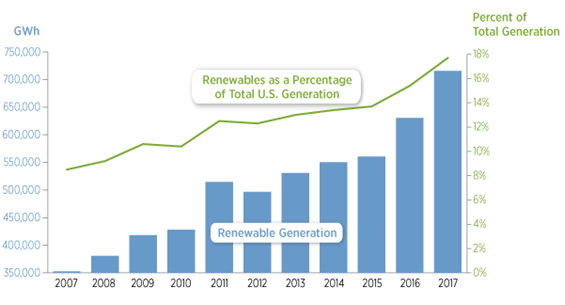Tenth Edition of Data Book Reveals Trends in U.S. and Global Renewable Energy Growth
|
U.S. renewable electricity grew to 19.7 percent of total installed capacity and 17.7 percent of total electricity generation in 2017, compared to 18.3 percent of total installed capacity and 15.6 percent of total electricity generation in 2016 according to the 2017 Renewable Energy Data Book, now in its 10th edition. Installed global renewable electricity capacity also continued to increase in 2017, representing 32.2 percent of total capacity worldwide.
Graphic from the 2017 Renewable Energy Data Book highlights sustained growth in U.S. renewable electricity generation since 2007.
The Renewable Energy Data Book also includes state- and region-specific energy data and trends, along with statistics on clean energy investments and development worldwide. |
Comments (0)
This post does not have any comments. Be the first to leave a comment below.
Featured Product


